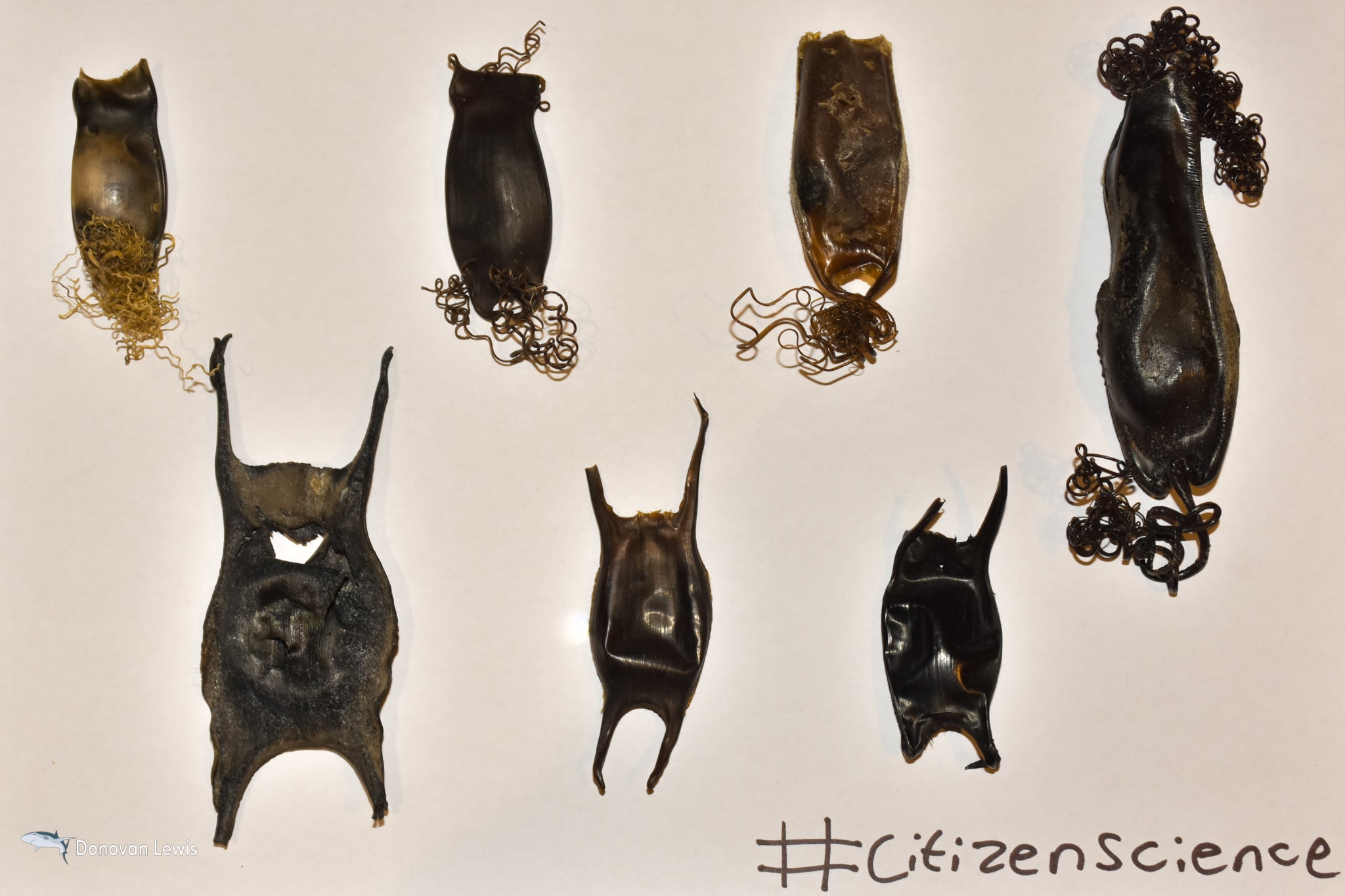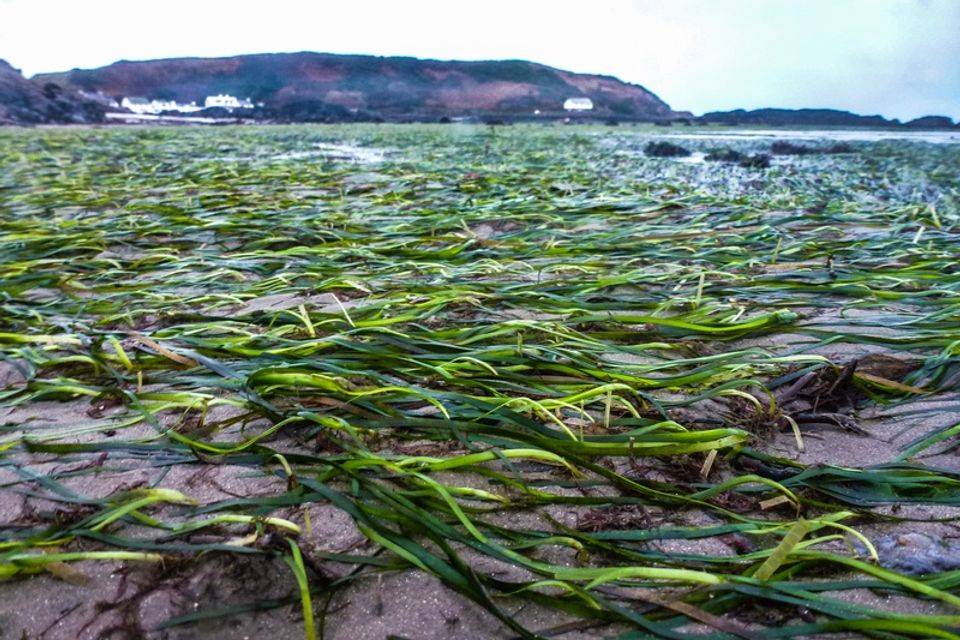Marine Life & Conservation Blogs
Western Ecology Tour: Get W.E.T for Science

They say that if you can dive in the UK you can dive anywhere, but what does this say for the British Coastline and Diving? That’s a question that’s going to be answered by a team of avid and passionate divers and Biologists from across the UK during the upcoming summer of 2021.
The Expedition is being led by Andy Clark (Andy The Northern Diver) of @fancy_a_brew_podcast, along with a team consisting of photographers, camera operators and biologists. They are embarking on a British diving expedition known as the Western Ecology Tour (W.E.T). The aim of the expedition is to travel to the northern reaches of Scotland and dive at Loch Carron & Loch Duich and then travel South along the West Coast to the Llŷn Peninsula in North Wales, and finally onto Pembrokeshire, diving the best the west has to offer.
The expedition is looking to live life in a minimalist way, camping and cooking out in the open air.
The teams aim is not just to dive sites, but to tackle conservation issues and shed light on projects up and down the UK, they have three projects which the trip will be focusing on. These projects include the Shark & Skate Citizen Science Scotland, Project Seagrass, and Neptune’s Army of Rubbish Cleaners (NARC). The team will be accompanied with a Biologist or expert that works on each of the 3 projects to aid and guide the team, but also help shed extra light on the critical conservation work being carried out.
The team are also aiming to gain media coverage with the support of sponsors, and will include a series of live blogs for Scubaverse. This will be used to promote the unique range of life that lives around the UK, and advertise the projects and charities that the team will be working with.
Shark & Skate Citizen Science Scotland
The Shark & Skate Citizen Science Scotland Project is headed up by Dr Lauren Smith and is set up to obtain vital information about various Shark and Ray species found in Scottish waters. There has recently been a discovery of an Egg laying site for the critically endangered Flapper Skate, this Skate species was once known as the Common Skate, but their numbers have been reduced so much that they are now classed as a Critically Endangered species due to the disturbance of their breeding grounds. Dr Lauren Smith and her colleagues are working to have the site listed as an official Marine Protected Area, this would help reduce disturbance and damage to the breeding site and eggs as fishing activities would be prohibited from within the site.
https://www.facebook.com/groups/sharkandskatecitizensciencescotland
Project Seagrass
The Project Seagrass element is led by Jake Davies, his work is focused on the conservation of Seagrass Ecosystems by informing the local communities to the presence of the Seagrass meadows that hug the Welsh Coastline, and educating the public to the vast importance that this habitat plays in our Oceans health. Seagrass is the only true plant in our oceans, this habitat is home to a whole host of animals from Rays, Seals and Seahorses and is vitally important in our fight against Climate Change.
Neptune’s Army of Rubbish Cleaners (NARC)
NARC is supported by Charlie Young, and it is an award-winning Charity that has been fighting to keep the British Coastline litter free since 2005, and was the UK’s first underwater clean up group. NARC consist of volunteer divers who devote their own time and resources to carry out these clean-up operations and to raise awareness of the impacts of pollution on local wildlife. Divers involved in the project are armed with scissors, bags and trays in order to collect as much rubbish as they can, the team have found a huge range of rubbish from the seabed which varies from mobile phones, bikes, chairs, skateboards and a kitchen sink! The most abundant rubbish however is that of discarded fishing gear such as nets, fishing line and lobster pots, anything collected is then cleaned and recycled wherever possible.
The Expedition is hoping to raise over £6,000 using a mix of corporate sponsorship and crowd funding using their JustGiving page which can be found here: www.justgiving.com/
Donations are being used for 2 areas of the expedition, the first is a hope that £2000 per project be raised, with the money going towards equipment and the running of their operations one of which is for supplies and costs such as site entry and fuel, and the other being. Any further funds would be to supplement the overall cost of the expedition for such things as fuel, campsite entry and air fills.
If you’d like any further information and to keep up to date with Expedition Wester Ecology Tour check out the webpage https://andythenortherndiver.com/expedition-wet/
Blogs
The Ocean Cleanup Breaks 10,000,000 KG Barrier

The Ocean Cleanup, the global non-profit project, has removed a verified all-time total of ten million kilograms (22 million lbs.) of trash from oceans and rivers around the world – approximately the same weight as the Eiffel Tower.
To complete its mission of ridding the oceans of plastic, The Ocean Cleanup uses a dual strategy: cleaning up the Great Pacific Garbage Patch (GPGP) to remove the plastic already afloat in the oceans, while stopping the flow of plastic from the world’s most polluting rivers.
Through cleaning operations in the GPGP and in rivers in eight countries, the cumulative total of trash removed has now surpassed ten million kilograms. This milestone demonstrates the acceleration of The Ocean Cleanup’s impact, while underlining the astonishing scale of the plastic pollution problem and the need for continued support and action.
While encouraging for the mission, this milestone is only a staging point: millions more tons of plastic still pollute our oceans and The Ocean Cleanup intends to continue learning, improving and innovating to solve this global catastrophe.
This announcement comes as governments from around the world meet to continue negotiations to develop a new legally binding instrument to end plastic pollution at INC4 in Ottawa, Canada. Representatives of The Ocean Cleanup will be in attendance and the organization will be urging decision-makers to collaborate towards a comprehensive and ambitious global treaty which addresses plastic at all stages of its life cycle and in all marine environments worldwide, including in areas beyond national jurisdiction.
It is encouraging to see that the need for remediation is reflected in the various options for potential treaty provisions. It is essential that the final treaty contains clear targets for the remediation of legacy plastic pollution, and reduction of riverine plastic emissions.
Tackling plastic pollution requires innovative and impactful solutions. The treaty should therefore incentivize the innovation ecosystem by fostering innovations that make maximal use of data, technology and scientific knowledge – such as those designed and deployed by The Ocean Cleanup.
‘After many tough years of trial and error, it’s amazing to see our work is starting to pay off – and I am proud of the team who has brought us to this point.’ said Boyan Slat, Founder and CEO of The Ocean Cleanup. ‘While we still have a long way to go, our recent successes fill us with renewed confidence that the oceans can be cleaned.’
The Ocean Cleanup was founded in 2013 and captured its first plastic in 2019, with the first confirmed catch in the GPGP coming soon after the deployment of Interceptor 001 in Jakarta, Indonesia. After surpassing one million kilograms of trash removed in early 2022, the non-profit project has since progressed to the third iteration of its GPGP cleaning solution, known as System 03, and a network of Interceptors currently covering rivers in eight countries, with more deployments set for 2024.
About The Ocean Cleanup
The Ocean Cleanup is an international non-profit organization that develops and scales technologies to rid the world’s oceans of plastic. They aim to achieve this goal through a dual strategy: stemming the inflow via rivers and cleaning up the legacy plastic that has already accumulated in the ocean. For the latter, The Ocean Cleanup develops large-scale systems to efficiently concentrate the plastic for periodic removal. This plastic is tracked and traced through DNV’s chain of custody model to certify claims of origin when recycling it into new products. To curb the tide via rivers, The Ocean Cleanup has developed Interceptor™ solutions to halt and extract riverine plastic before it reaches the ocean. Founded in 2013 by Boyan Slat, The Ocean Cleanup now employs a broadly multi-disciplined team of approximately 140. The foundation is headquartered in Rotterdam, the Netherlands.
For more information, visit: theoceancleanup.com and follow @theoceancleanup on social media.
Marine Life & Conservation Blogs
Creature Feature: Dusky Shark

 In this series, the Shark Trust will be sharing amazing facts about different species of sharks and what you can do to help protect them.
In this series, the Shark Trust will be sharing amazing facts about different species of sharks and what you can do to help protect them.
This month we’re taking a look at the Dusky Shark, a highly migratory species with a particularly slow growth rate and late age at maturity.
Dusky sharks are one of the largest species within the Carcharhinus genus, generally measuring 3 metres total length but able to reach up to 4.2 metres. They are grey to grey-brown on their dorsal side and their fins usually have dusky margins, with the darkest tips on the caudal fin.
Dusky Sharks can often be confused with other species of the Carcharhinus genus, particularly the Galapagos Shark (Carcharhinus galapagensis). They have very similar external morphology, so it can be easier to ID to species level by taking location into account as the two species occupy very different ecological niches – Galapagos Sharks prefer offshore seamounts and islets, whilst duskies prefer continental margins.
Hybridisation:
A 2019 study found that Dusky Sharks are hybridising with Galapagos Sharks on the Eastern Tropical Pacific (Pazmiño et al., 2019). Hybridisation is when an animal breeds with an individual of another species to produce offspring (a hybrid). Hybrids are often infertile, but this study found that the hybrids were able to produce second generation hybrids!
Long distance swimmers:
Dusky sharks are highly mobile species, undertaking long migrations to stay in warm waters throughout the winter. In the Northern Hemisphere, they head towards the poles in the summer and return southwards towards the equator in winter. The longest distance recorded was 2000 nautical miles!
Very slow to mature and reproduce:
The Dusky Shark are both targeted and caught as bycatch globally. We already know that elasmobranchs are inherently slow reproducers which means that they are heavily impacted by overfishing; it takes them so long to recover that they cannot keep up with the rate at which they are being fished. Dusky Sharks are particularly slow to reproduce – females are only ready to start breeding at roughly 20 years old, their gestation periods can last up to 22 months, and they only give birth every two to three years. This makes duskies one of the most vulnerable of all shark species.
The Dusky Shark is now listed on Appendix II of the Convention on the Conservation of Migratory Species (CMS), but further action is required to protect this important species.
Scientific Name: Carcharhinus obscurus
Family: Carcharhinidae
Maximum Size: 420cm (Total Length)
Diet: Bony fishes, cephalopods, can also eat crustaceans, and small sharks, skates and rays
Distribution: Patchy distribution in tropical and warm temperate seas; Atlantic, Indo-Pacific and Mediterranean.
Habitat: Ranges from inshore waters out to the edge of the continental shelf.
Conservation status: Endangered.
For more great shark information and conservation visit the Shark Trust Website
Images: Andy Murch
Diana A. Pazmiño, Lynne van Herderden, Colin A. Simpfendorfer, Claudia Junge, Stephen C. Donnellan, E. Mauricio Hoyos-Padilla, Clinton A.J. Duffy, Charlie Huveneers, Bronwyn M. Gillanders, Paul A. Butcher, Gregory E. Maes. (2019). Introgressive hybridisation between two widespread sharks in the east Pacific region, Molecular Phylogenetics and Evolution 136(119-127), https://doi.org/10.1016/j.ympev.2019.04.013.
-

 News3 months ago
News3 months agoCapturing Critters in Lembeh Underwater Photography Workshop 2024: Event Roundup
-

 Marine Life & Conservation Blogs3 months ago
Marine Life & Conservation Blogs3 months agoCreature Feature: Swell Sharks
-

 Blogs2 months ago
Blogs2 months agoMurex Resorts: Passport to Paradise!
-

 Gear Reviews4 weeks ago
Gear Reviews4 weeks agoGEAR REVIEW – Revolutionising Diving Comfort: The Sharkskin T2 Chillproof Suit
-

 Blogs3 months ago
Blogs3 months agoDiver Discovering Whale Skeletons Beneath Ice Judged World’s Best Underwater Photograph
-

 News3 months ago
News3 months agoPADI Teams Up with Wellness Brand Neuro to Drive Ocean Change and Create a Blue State of Mind
-

 Gear Reviews3 months ago
Gear Reviews3 months agoGear Review: Oceanic+ Dive Housing for iPhone
-

 News3 months ago
News3 months agoWorld’s Best Underwater Photographers Unveil Breathtaking Images at World Shootout 2023






















